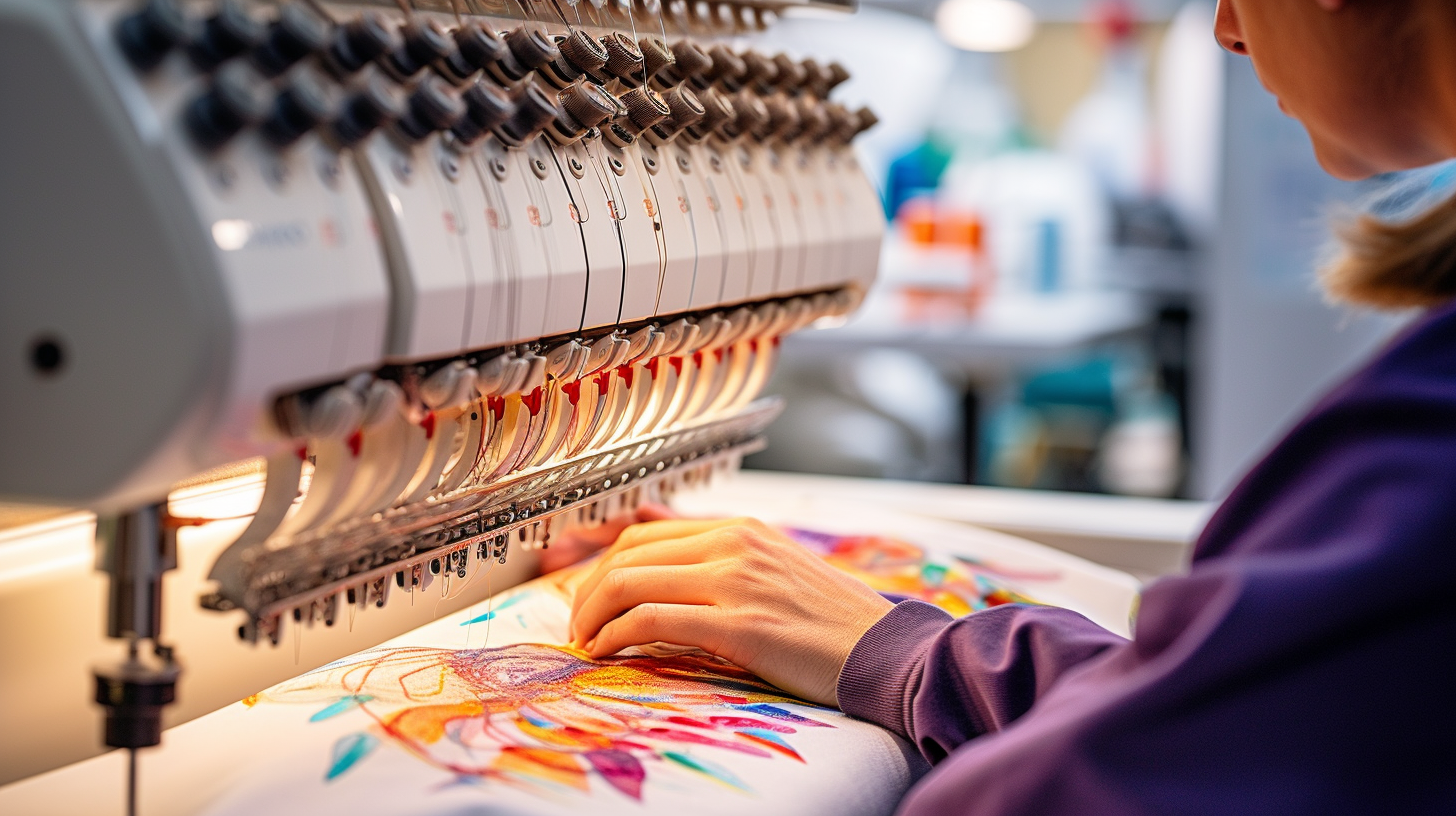Affordable Digitizing for Embroidery: Precision and Detail
Wiki Article
Streamlining the Art of Needlework Digitizing: Step-by-Step Guide
Needlework digitizing is a thorough craft that requires precision and imagination. As technology remains to breakthrough, the digitization process has ended up being a lot more obtainable, allowing lovers to bring their detailed designs to life with convenience. In this guide, we will decipher the intricacies of embroidery digitizing, damaging down each action systematically to simplify the process and equip both newbies and skilled embroiderers alike. Keep tuned to discover just how you can simplify this detailed art kind and change your innovative visions right into wonderfully stitched work of arts.Recognizing Needlework Digitizing Software Program
Needlework digitizing software works as a vital tool for transforming detailed styles right into digital styles suitable with embroidery equipments, helping with specific stitching and personalization. This customized software enables customers to import different image data formats, such as JPG or PNG, and transform them into embroidery machine-readable layouts like DST, EXP, or PES - Digitizing for Embroidery. By using attributes like stitch editing and enhancing, rug alternatives, and thread color choice, digitizing software makes it possible for users to manage every aspect of the style procedureAdditionally, advanced embroidery digitizing software application offers tools for developing complex designs, changing stitch thickness, and integrating detailed information. Customers can additionally sneak peek the design before stitching it out, making sure precision and decreasing mistakes. Additionally, many software application offer automatic functions that aid simplify the digitizing process, saving effort and time.
Recognizing the capabilities of embroidery digitizing software application is important for accomplishing high-quality cause needlework projects. By mastering this tool, needlework lovers and specialists can unleash their creative thinking and bring complex layouts to life with precision and effectiveness.

Choosing the Right Layout Data
After acquainting yourself with the capacities of needlework digitizing software, the following essential action in the process is choosing the ideal layout documents for your task. Digitizing for Embroidery. When selecting a layout documents for needlework digitizing, it's crucial to consider the intricacy of the layout, the size of the last item, and the sort of textile you will certainly be collaborating withFor detailed layouts with fine details, a high-resolution image or vector documents is suggested to make certain that the embroidery maker can precisely reproduce the style. In addition, the dimension of the end product plays a substantial role in selecting the best style documents. Bigger layouts might require higher resolution data to maintain quality and sharpness.
Additionally, the sort of material you will certainly be embroidering on influences the selection of design data. Various fabrics might Homepage call for modifications in the layout data to ensure that the stitches are effectively aligned and the style looks like meant. By thoroughly picking the ideal design data based upon these aspects, you can set on your own up for a successful needlework digitizing process.
Digitizing Tools and Strategies
Using specialized software and accuracy methods, digitizing devices are necessary in transforming complex designs right into embroidery-ready files. Embroidery digitizing software, such as Wilcom, Hatch, or Embrilliance, supplies the essential system to convert artwork into stitch data. These programs provide functions like stitch modifying, rug alternatives, and text devices to make certain the layout converts seamlessly onto fabric.One of the essential methods in digitizing is producing a clear course for the needlework machine to comply with. This entails digitizing each element of the style with precision, establishing stitch click here for info kinds, densities, and directions. By utilizing tools like digitizing tablets or software-specific plugins, embroiderers can achieve a high level of precision in their digitized layouts.
In addition, understanding the art of padding sewing is crucial for producing quality needlework. Underlay stitching stabilizes the material and creates a foundation for the design, guaranteeing that the end product is both visually appealing and lasting. By comprehending these digitizing tools and methods, embroiderers can raise their craft and bring complex designs to life with accuracy and efficiency.
Customizing Stitch Types and Directions
The option of stitch types can significantly affect the total look and texture of the stitched style. By purposefully integrating these stitch kinds, embroiderers can accomplish deepness and dimension in their designs.Additionally, the direction of stitches plays a vital function in improving the visual allure of the last embroidery. Numerous stitch directions can add texture, emphasize certain aspects, and produce aesthetic passion. For circumstances, altering the angle of stitches can replicate motion or natural patterns like hair or plumes. By trying out various stitch angles and patterns, embroiderers can bring their designs to life with amazing information and details. Mastering the art of personalizing stitch kinds and directions equips embroiderers to unleash their imagination and boost the quality of their work.
Testing and Refining Your Digitized Design
To ensure the accuracy and high quality of your digitized layout, extensive testing and improvement are necessary action in the embroidery digitizing process. When you have finished the digitization of your style, it is critical to evaluate address it before continuing with the real embroidery. Checking permits you to recognize any kind of possible concerns such as string breaks, sew thickness troubles, or layout distortions that might impact the last result.
After testing, it is essential to fine-tune your digitized design based on the comments from the test sew-out. This might entail tweaking stitch settings, adjusting densities, or making changes to the overall layout to accomplish the wanted result. By repeating with screening and improvement, you can fine-tune your digitized design to perfection prior to moving ahead with the real needlework procedure.
Verdict
Finally, mastering the art of needlework digitizing requires a complete understanding of the software application, selecting the right layout file, making use of digitizing devices and techniques, customizing stitch kinds and directions, and screening and improving the digitized layout. By adhering to these actions, embroiderers can simplify the digitizing procedure and create top quality embroidered layouts with precision and effectiveness.Report this wiki page